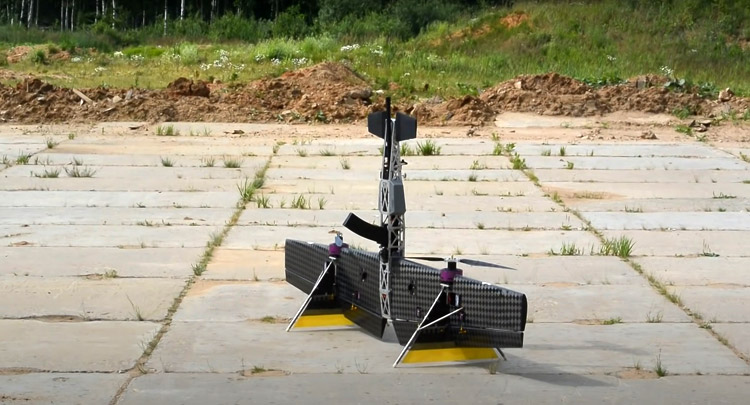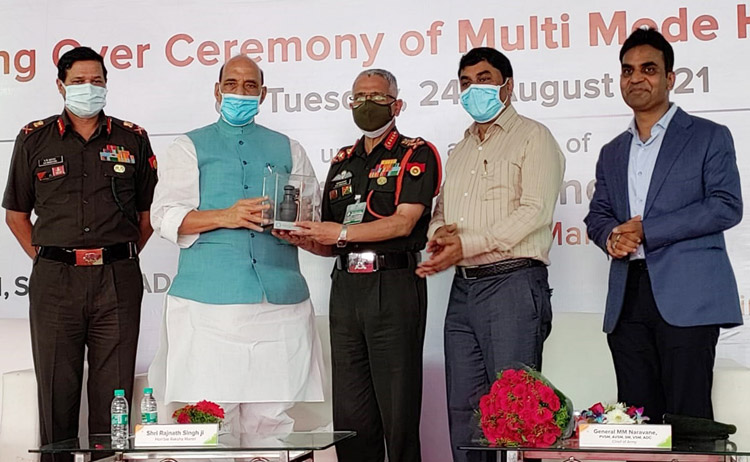INDIAN ARMED FORCES CHIEFS ON OUR RELENTLESS AND FOCUSED PUBLISHING EFFORTS

The insightful articles, inspiring narrations and analytical perspectives presented by the Editorial Team, establish an alluring connect with the reader. My compliments and best wishes to SP Guide Publications.

"Over the past 60 years, the growth of SP Guide Publications has mirrored the rising stature of Indian Navy. Its well-researched and informative magazines on Defence and Aerospace sector have served to shape an educated opinion of our military personnel, policy makers and the public alike. I wish SP's Publication team continued success, fair winds and following seas in all future endeavour!"

Since, its inception in 1964, SP Guide Publications has consistently demonstrated commitment to high-quality journalism in the aerospace and defence sectors, earning a well-deserved reputation as Asia's largest media house in this domain. I wish SP Guide Publications continued success in its pursuit of excellence.
Light Drone Interceptor
The terrorist threat to India has gone up with the Taliban taking control of Afghanistan. The possibility of terrorists using drones has certainly gone up, as is the possibility of CBRN attacks.
 |
The Author is Former Director General of Information Systems and A Special Forces Veteran, Indian Army |

Why India has been lacking in drone and counter drone technology is precisely for this reason – over dependence on the Defence Research and Development Organisation (DRDO) and limited role for the private defence industry. The DRDO first came up with a counter drone system only because of the visit of then US President Donald Trump to India during February 2020. The drone terror attack on the IAF base in Jammu on June 27 was a wake-up call for India. Luckily no helicopters (intended targets) were hit or damaged and two personnel received minor injuries.
Two-days later, Prime Minister Narendra Modi chaired a high-level meeting with the Defence Minister, Home Minister, National Security Advisor and others including civil aviation ministry officials in attendance. The focus of this meeting was to discuss a policy on the use of civil drones, futuristic challenges in the defence sector and the need to suitably equip the military to tackle such threats. It was decided to fast-track a comprehensive policy on the use of drones by civilian operators in the country.
Presiding over the 18th Investiture of the Border Security Force (BSF) on July 17, 2021, Home Minister Amit Shah said, “Smuggling of drugs, arms, and explosives through tunnels and drones is a major challenge. Today, it is very important for us to deal with these challenges at the earliest. I am confident that we will soon increase our presence at the borders with Swadeshi (made-in-India) anti-drone technology.” He further said that all gaps in India’s border fencing will be filled by 2022 to completely end the infiltration and other anti-national activities.
In speeding up our counter-drone technology, we must give free hand to innovation by small enterprises, also looking at inexpensive systems to tackle drones
The BSF investiture ceremony was attended by Intelligence Bureau Chief Aravind Kumar, Research and Analysis Wing Head Samant Goel, BSF Director General Rakesh Asthana and heads of other central police forces. Amit Shah told the top security officers that it is their responsibility to find new technology with the help of experts to help India deal with the threat of the use of Artificial Intelligence (AI) and robotics technology by the enemies and terrorists.
The terrorist threat to India has gone up with the Taliban taking control of Afghanistan. Pakistan and Pakistan-based terrorist organisations have sought Taliban help to attack J&K. Taliban, which has links in both India and Bangladesh, is also intimately linked to Al-Qaeda. Consequently, Al-Qaeda activities in India could go up. With the confluence of terrorists in Af-Pak region after Taliban takeover of Afghanistan, foreign scholars are showing concern about Pakistan’s nuclear weapons falling in terrorists hands. The possibility of terrorists using drones has certainly gone up, as is the possibility of CBRN attacks.

We have to be prepared for drone threats anywhere in the country by drones of all sizes - big and small. India’s Drone Rules, 2021 has abolished requirement of various approvals (certificate of conformance, certificate of maintenance, import clearance, acceptance of existing drones, operator permits, authorisation of R&D organisation and student remote pilot license) and reduced the fee to operate a drone to nominal levels de-linked from the size of the drone. A unique identification number of the drone can be generated by providing requisite details on the digital sky platform. So we could witness hundreds of drone flying around.
In speeding up our counter-drone technology, we must give free hand to innovation by small enterprises, also looking at inexpensive systems to tackle drones rather than expensive systems and costly missiles. It should be easy for MSMEs to develop inexpensive systems to counter small and DIY drones.
Russia’s Almaz-Antey, which also has a branch in India and recently confirmed it would start delivering the S-400 missile systems to India by end of 2021, has developed the ‘Krechet’ interceptor drone with a 12-gauge shotgun which has successfully passed field tests according to its general designer Pavel Sozinov. The target of the ‘Krechet’ is a drone weighing up to 30 kg. It makes no sense to shoot them down with anti-aircraft missiles due to the difficulty of detecting a small-sized target and the incomparable cost of an interceptor missile says Sozinov.
The drone terror attack on the IAF base in Jammu on June 27 was a wake-up call for India
A flight mission prepared by a ground control system is loaded into the Krechet. After the launch, the drone identifies the target, with the control system bringing the UAV into the line of fire with maximum accuracy at the enemy drone. Everything happens automatically, the operator only needs to control the interception. This is just one example but there is no limit to such innovations.
The Indian drone market is expected to reach $1.21 billion in 2021, and 2022 will be the year the country will witness widespread usage of drones. If we get going in earnest, we would be not only meeting our requirements but also export drones and counter-drone systems.
On August 24, 2021, Defence Minister Rajnath Singh handed over the first batch of 1,00,000 multi-mode hand grenades to the Indian Army; the country’s first ever fully indigenous grenades. The ceremony was nine days after India celebrated its 75th Independence Day – signifying the fact that we took nearly 75 years to develop indigenous grenades. These grenades produced by the Nagpur-based Economic Explosives Ltd (EEL), a private enterprise, are to replace the M36 of World War II design in use with the Army.

EEL is a 100 per cent subsidy of ‘Solar Industries’, a city-based company. EEL has also signed a memorandum of understanding (MoU) for supply of these grenades to Indonesia. In October 2020, EEL was awarded a contract to make 10 lakh grenades in two years. The company is confident of completing this order in 15 months, as announced by the Chairman, Satyanarayan Nandlal Nuwal.
In October 2020, EEL was awarded a contract to make 10 lakh grenades in two years. The company is confident of completing this order in 15 months.
In contrast, the Army has been suffering numerous casualties because of faulty ammunition supplied by the Ordnance Factory Board (OFB). Thousands of crores worth OFB-supplied faulty ammunition is lying around. This wasted money could have been used to procure 100 medium artillery guns, as intimated to the Ministry of Defence (MoD) by the Army. In recent months, the Army found that one crore Tavor ammunition rounds supplied by the OFB were all duds.





